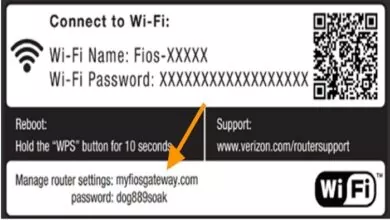Sales Course: Negotiation Tactics for Sales Professionals

Sales Course: Negotiation Tactics for Sales Professionals is designed to help sales professionals hone their negotiation skills. The remote closing academy covers a variety of topics, including how to handle difficult negotiation situations, how to read body language, and how to build rapport with clients. The course also includes role-playing exercises to help students practice their new skills.
1. Sales Course Negotiation Tactics for Sales Professionals
Sales negotiation is a critical skill for sales professionals. The ability to effectively negotiate can mean the difference between closing a deal and losing out to the competition.
There are a number of different negotiation tactics that can be used in order to secure the best possible outcome for a sales transaction. The following are some of the most effective negotiation tactics for sales professionals:
1. Know Your BATNA
The first step in any negotiation is to know your BATNA. BATNA stands for Best Alternative To a Negotiated Agreement. In other words, it is the best possible outcome that can be achieved if a negotiation fails.
Knowing your BATNA gives you a reference point to work from during a negotiation. It also provides you with the ability to walk away from a negotiation if the other party is not willing to meet your needs.
2. Anchor High
One of the most effective negotiation tactics is to anchor high. This means that you start the negotiation at a high point, rather than a low point.
The reason this tactic is so effective is that it gives you room to negotiate, while still ending up with a deal that is favorable to you.
3. Use Concessions Strategically
Another effective negotiation tactic is to use concessions strategically. A concession is something that you are willing to give up in order to reach an agreement.
Concessions should be used sparingly, and only given up if they are truly necessary. Additionally, concessions should be given in exchange for something of equal or greater value.
4. Focus on Value, Not Price
When negotiating, it is important to focus on value, rather than price. This means that you should focus on the benefits that the product or service you are selling provides, rather than the cost.
Focusing on value will help you to sell on the basis of what the customer needs, rather than on price. This is a much more effective sales tactic, as it allows you to sell on the basis of the customer’s needs, rather than on price.
5. Never Accept the First Offer
One of the most important negotiation tips is to never accept the first offer
2. The Benefits of Negotiation in Sales
Sales negotiation is a critical skill for sales professionals. By definition, negotiation is the process of two or more parties reaching an agreement about the terms of a transaction. In a sales context, negotiation typically happens between a buyer and a seller.
The goal of negotiation is to reach an agreement that is mutually beneficial for both parties. A successful negotiation results in a win-win situation, where both the buyer and the seller feel like they have gotten a fair deal.
There are many benefits of negotiation in sales. Here are a few of the most important ones:
1. Negotiation can help you close more deals
The most obvious benefit of negotiation is that it can help you close more deals. If you’re able to successfully negotiate with buyers, you’ll be able to increase the chances of them doing business with you.
2. Negotiation can help you get better terms
Another benefit of negotiation is that it can help you get better terms. When you’re able to successfully negotiate with buyers, you’ll be able to get better prices, payment terms, and other conditions that are favorable to you.
3. Negotiation can build relationships
In addition to helping you close more deals and get better terms, negotiation can also help you build relationships. The process of negotiation requires communication and collaboration, which can help build trust and rapport between parties. When you’re able to successfully negotiate with buyers, you’ll be able to create stronger relationships with them.
4. Negotiation can create value
Another benefit of negotiation is that it can create value. When parties are able to successfully negotiate, they can create value that didn’t previously exist. This is because negotiation can help parties find creative solutions to problems and come up with innovative ideas.
5. Negotiation can help you avoid conflict
Finally, negotiation can help you avoid conflict. When parties are able to negotiate, they can resolve disagreements and come to an agreement that everyone is happy with. This can help prevent conflict from escalating and avoid the need for litigation.
Overall, there are many benefits of negotiation in sales. If you’re a sales professional, it’s important to develop your negotiation skills so that you can
3. The Basics of Negotiation
Sales negotiation is a process where two parties discuss their differences in order to reach an agreement. The process can be formal or informal, but the goal is always the same: to find a mutually beneficial solution that satisfies both parties.
There are three basic steps to any sales negotiation:
1. Pre-negotiation
2. Negotiation
3. Post-negotiation
Pre-negotiation is the phase where the parties involved gather information and prepare for the negotiation. This is when each side does their homework and decides what their objectives and goals are. It’s important to have a clear understanding of what you want to achieve before entering into any negotiation.
The negotiation phase is when the actual bargaining takes place. This is where each side tries to convince the other to accept their terms. It’s important to remember that in a negotiation, both sides can win. The key is to find a solution that is acceptable to both parties.
The post-negotiation phase is when the agreement is finalized and both sides sign on the dotted line. This is when the details of the agreement are ironed out and both parties commit to the terms.
Sales negotiation is an important skill for any sales professional. By understanding the basics of negotiation, you’ll be better equipped to close deals and achieve success in your career.
4. The different types of negotiation
Sales negotiation is a process where two parties discuss the terms of a transaction and come to an agreement. The negotiation can be over price, terms, conditions, or any other aspect of the deal.
There are four main types of negotiation:
1. Distributive negotiation: This is where both parties are trying to maximize their own outcomes, and there is a fixed pie of resources. Both parties are trying to get the biggest slice of the pie.
2. Integrative negotiation: This is where both parties are trying to find a win-win solution. They are looking for an outcome that is mutually beneficial.
3. Concessional negotiation: This is where one party is trying to make concessions to the other party in order to reach an agreement.
4. Competitive negotiation: This is where both parties are trying to out-negotiate each other and get the best deal possible.
5. Tips for Negotiating Successfully
Almost everyone can benefit from improving their negotiation skills,
and there are negotiation tactics that even the most experienced
negotiators can learn from it. Here are five tips for negotiating
successfully, whether you’re negotiating a salary raise with your boss
or the price of a car with a dealer.
1. Do Your Homework
Before entering into any negotiation, it’s important to do your
research and know your bottom line. What are you willing to accept,
and what are you not willing to budge on? It’s also important to know
the other party’s bottom line, which you can often find out through
talking to other people in the same industry or doing your own
research.
2. Start High
It’s human nature to want to start low when negotiating, but this is
often a mistake. Instead, start high and let the other party negotiate
down. This gives you more room to negotiate, and you’re more likely to
end up at a number that’s closer to your bottom line.
3. Be Willing to Walk Away
If you’re not getting what you want in a negotiation, be willing to
walk away. This shows the other party that you’re not desperate and
that you’re willing to walk away from the deal if necessary. This can
often be enough to get the other party to budge on their position.
4. Use Silence to Your Advantage
Silence can be a powerful negotiation tool. When the other party is
talking, be quiet and let them continue talking. They may say
something that gives you an advantage, or they may start to feel
uncomfortable with the silence and make a concession.
5. Be Persistent
If you’re really not getting what you want in a negotiation, don’t be
afraid to be persistent. The other party may give in if you keep
pushing, and if they don’t, you can always walk away.
6. Case Study: A Successful Sales Negotiation
Sales negotiation is a process where two parties attempt to reach an agreement on the price and terms of a sale. The goal of negotiation is to reach an agreement that is fair to both parties and meets the needs of both parties.
There are many different negotiation tactics that can be used in a sales negotiation. The most important thing is to be prepared and to know your goals. Below are six tips to help you succeed in your next sales negotiation.
1. Know your BATNA
Your BATNA is your Best Alternative To a Negotiated Agreement. This is the option you will take if you cannot reach an agreement in the negotiation. It is important to know your BATNA before entering into a negotiation so that you can compare any agreement you reach to your BATNA. If your BATNA is better than the agreement, you can walk away from the negotiation.
2. Make the first offer
Research has shown that the party who makes the first offer has a better chance of getting their desired outcome. This is because the first offer sets the tone for the negotiation and can be used as a starting point for the other party to make their own offer.
3. Be prepared to compromise
Compromise is a key part of any negotiation. Both parties need to be willing to give up something in order to reach an agreement. If you are not prepared to compromise, you will likely not reach an agreement.
4. Know your bottom line
Your bottom line is the lowest amount you are willing to accept in the negotiation. It is important to know your bottom line before entering into a negotiation so that you do not agree to terms that are too low.
5. Use anchoring
Anchoring is a negotiation tactic where you state a high number first in order to anchor the other party’s expectations. For example, if you are selling a car for $5,000, you could anchor the negotiation by stating that the car is worth $10,000. This will make the $5,000 seem like a more reasonable offer.
6. Be persistent
Sales negotiations can often be long and drawn out. It is important to be persistent and





